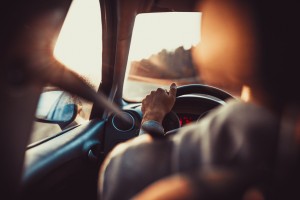 The driver killed in the May 2016 Tesla self-driving car accident allegedly ignored warnings to take control of the car, according to federal investigators. A recent report by the National Highway Traffic Safety Administration revealed new information on the accident, raising questions about the role of human error, USA Today reports. The accident in question involved a Tesla Model S that crashed into a white tractor trailer that blended in with the sky — thus was not detected by the car’s sensors.
The driver killed in the May 2016 Tesla self-driving car accident allegedly ignored warnings to take control of the car, according to federal investigators. A recent report by the National Highway Traffic Safety Administration revealed new information on the accident, raising questions about the role of human error, USA Today reports. The accident in question involved a Tesla Model S that crashed into a white tractor trailer that blended in with the sky — thus was not detected by the car’s sensors.
NTSB revealed that they did not find any defects of the Tesla car, USA Today reports. Rather, the car had given Brown six “Hold Steering Wheel” audio warnings prior to the crash, which he appeared to have ignored. Jack Landskroner, an attorney working with Brown’s family, said in an email statement to USA Today that the media had perpetuated rumors that Brown was watching a video during the crash, but this most recent report confirms them to be false.
“There was no video playing and no evidence that any electronics were in use at the time of this accident, other than his car’s operational technology,” he said. “We look forward to receiving the Board’s finding and recommendations related to the crash which we anticipate will be published at a later date.”
Self-driving cars have made headlines recently for both their shortcomings and conveniences. With 3 million people injured in traditional car accidents in the United States every year, one of the most prevalent praises was that autonomous vehicles take out the margin for human error. And with almost 300,000 incidents of drunk driving happening every day, these vehicles could potentially reduce this number as well.
But as technology advances, could humans continue to be the problem?
Some experts think so. Lisbi Abraham, Chief Information Officer at Andela, said in a statement to Forbes that pedestrians and drivers may delay the full switch to autonomous vehicles.
“Technology will keep advancing and solve many of the current problems with driverless cars,” he said. “The challenge will continue to be humans. People rushing out into traffic without watching, the many cars that will still be on the road with human drivers that are distracted or just poor drivers will all contribute to what will likely be a tumultuous, drawn-out shift from traditional cars to driverless ones.”
Fortune reports that General Motors will soon be launching a technology called Super Cruise, which operates through a series of sensors to tell when a driver is paying attention. Facial recognition software recognizes when the driver is not looking at the road and sends an alert for the driver to look back up. If the system does not recognize a response to that warning, it sends a series of audio alerts. When a response still is not detected, the vehicle stops completely.
Douglas Rushkoff writes in CNN that the lack of connection between computers and human senses is what will cause these major crashes, like the Tesla incident. And while a simple fracture from a minor car accident can be treated in 80% of urgent care centers, the repercussions of a crash like this could be more costly, even causing death.
“The problems emerge when computerized vehicles don’t have such networking at their disposal,” he writes. “Instead, we’re asking the poor Tesla to drive using the same senses mere humans use – which is why the car missed the fact that its entire field of vision was occupied not by sky, but by truck.”







